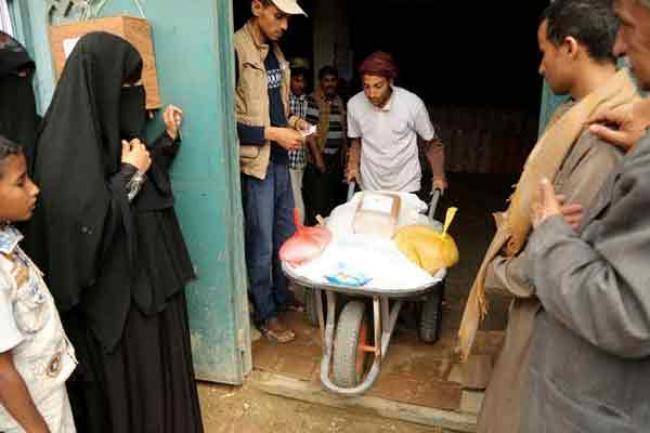Just Earth News 21 Jun 2016, 05:45 pm Print

WFP/Asmaa Waguih
The latest Integrated Food Security Phase Classification (IPC) analysis confirms that over half the country’s population is living in ‘emergency’ or ‘crisis’ levels of food insecurity, with some governorates seeing as much as 70 per cent of their population struggling to feed themselves.
At least seven million people, a quarter of the population, are living under ‘emergency’ levels of food insecurity, or phase 4 on the five-tier IPC scale. This reflects a 15-per cent increase since June 2015. Another 7.1 million people are in a state of ‘crisis,’ or phase 3.
“The IPC results clearly show the huge magnitude of the humanitarian crisis in Yemen,” said Jamie McGoldrick, UN Humanitarian Coordinator for Yemen. “This is one of the worst crises in the world and is continuing to get worse.”
Drivers of food insecurity
Fuel shortages and import restrictions have reduced availability of essential food commodities in the country, which imports some 90 per cent of its staple foods. Food and fuel imports in March 2016 were the lowest since October 2015. Fuel imports satisfied only 12 per cent of the country’s needs.
Shortages of seeds and fertilizers have crippled crop production across Yemen, where around 50 per cent of the labour force earns their living from the agriculture sector and related activities.
Two cyclones in November 2015, plus flash floods and locust swarms in April 2016 further plagued already struggling communities, limiting their ability to produce and access food.
“Ongoing conflict, displacement and limited access to farmland and fishing sites continue to cause significant losses to agriculture and threaten farmers’ livelihoods,” said Salah El Hajj Hassan, Yemen Representative of the Food and Agriculture Organization (FAO), stressing that it is now essential to help communities feed themselves through back-yard farming and small poultry production, among other interventions.
“With the fluidity of the situation and until a political solution is in place, we will continue to see an increase in the number of people struggling to feed themselves and their families and further deterioration in food security across Yemen,” said Purnima Kashyap, Country Director of the World Food Programme (WFP), urging parties to ensure unrestricted access for the delivery of humanitarian assistance to affected people.
Malnutrition
Some three million children under the age of five, and pregnant or nursing women, require services to treat or prevent acute malnutrition, the report said, citing data from the UN Children’s Fund (UNICEF).
Global Acute Malnutrition (GAM) is at an alarming stage in most of the country’s governorates, reaching levels of 25.1 per cent in Taiz Lowland and 21.7 in Al Hodeidah.
The same areas have seen a significant decrease in traditional fishing – by about 75 per cent in Taiz and Al Hodeidah. In other governorates fishing operations have halved compared with 2014.
Under these circumstances, both food and agricultural assistance are critical to saving lives and livelihoods across Yemen.
“From January to 30 April 2016, about 3.6 million people received emergency food assistance, but the overall response is significantly underfunded,” said McGoldrick, urging donors to increase humanitarian funding.
- World fails again: Landmine casualties hit record levels as treaties stall
- Explosions, gunfire, panic: Inside the suicide attack on paramilitary forces headquarters in Peshawar that left three security officials dead
- Nigeria in shock: 215 students abducted after bandits invade Catholic school
- Back-to-Back blasts: Delhi shock followed by deadly Islamabad suicide attack, 12 dead
- Chaos in Court! AC explosion shakes Pakistan’s top judicial building, 12 injured



-1763561110.jpg)


